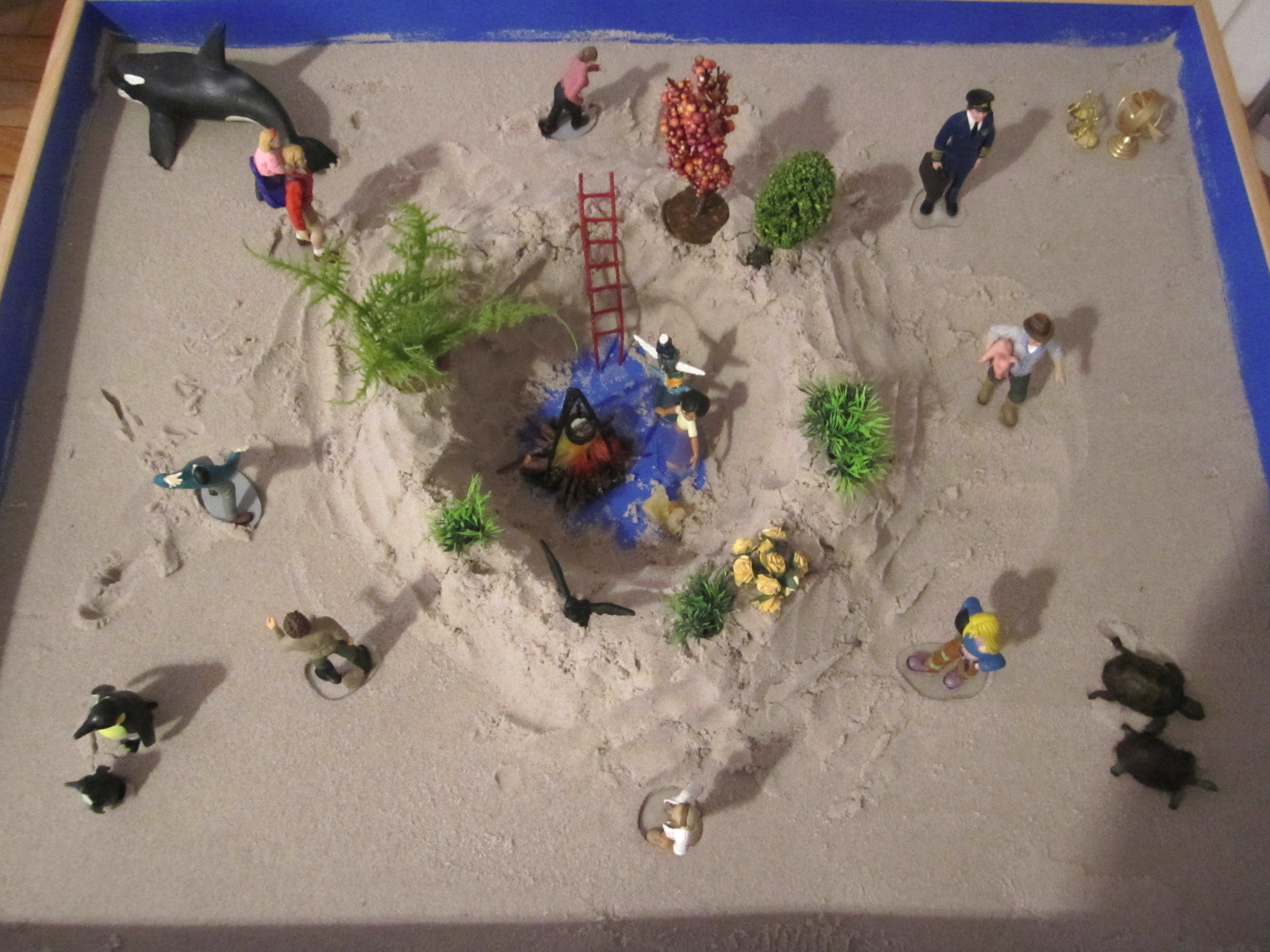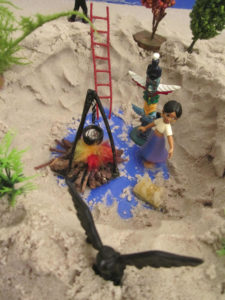Safe space


Nonverbal Memories, Sandplay for Adults
Winnicott writes: “…creativity is important in the search for the self, only in play can the adult or child be creative and use the whole personality, only in being creative the individual discovers the self.” (Winnicott D. Playing and reality. 2005).
Sandplay is a therapy based on the work made by Dora Kalff, who was one of C.G. Jung’s students. Today sandplay is used all over the world. Originally the therapy was developed for children, today it is used in the therapy for all ages and for many different problems.
For adults sandplay is most suitable when one needs and wants to access and treat memories and problems that are outside the reach for a verbal therapy. This can be the case when one has gone through difficult or traumatic experiences at an age when words were not available. The memories are then stored as body memories, without a verbal connection. The memories can exist for instance as tensions or pains. They can suddenly be recalled through sounds, smells, touches… or by re-experiencing similar situations. In that case the automatic reaction can be surprisingly strong and confusing, not appropriate for the actual situation. These memories are not defined with words and are not accessible with words. These memories can have their origin for instance in a difficult birth process, early accidents and illnesses. Also traumatic experiences later in life (accidents, wars, losses) can be difficult to express or access because of the severity of the experiences. In these cases being wordless is not an obstacle, sandplay works well without talking, even without a common language with the therapist.
The material for sandplay consists of two sandtrays, one with fine dry sand the other with wet sand and a set of miniatures of different kinds: humans, animals, houses, vehicles, natural material and much more. It is easy to assemble a satisfying image expressing what one needs to express in that moment, with or without figures.
The silent process during the work in the sand allows one to listen inwards to body and soul, to find out what one needs to do or be. Do I need dry or wet sand? Figures? which figures? When is the image or the process ready? The work allows a connection to memories that never were conscious or are not yet conscious. Once a connection is established the memories are worked on and transformed. The role of the therapist is to be a witness and sometimes a guide. A verbal interpretation is not always necessary.
Sandplay for children see: Sandplay with Children and Adolescents